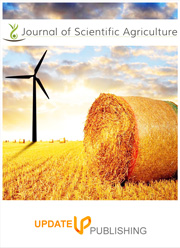Variability in cooking time, iron and zinc content in common bean (Phaseolus Vulgaris L.) genotypes
DOI:
https://doi.org/10.25081/jsa.2021.v5.6559Keywords:
Cooking time, diversity, micro nutrients, genotypesAbstract
Prolonged cooking time leads to structural changes at the grain cellular level, resulting in loss of nutrients such as iron (Fe) and zinc (Zn) which are among the main nutrients important in addressing micronutrient malnutrition. The aim of this study was to evaluate the diversity of cooking time, Fe and Zn content in a total of 152 common bean (Phaseolus vulgaris) genotypes from around Eastern Africa, in order to identify short cooking genotypes with high Fe and Zn content. Field trials were conducted at CIAT-Uganda research station over two seasons in 2016. Cooking time was estimated using an automated Mattson cooker at CIAT-Uganda while Fe and Zn content was determined using XRF analysis at Rwanda Agricultural Board (RAB) in Rubona. A wide variability was evident from the test genotypes both for cooking time and mineral concentration. Cooking time exhibited a continuous distribution ranging from 35-100 minutes for the first season and 43–122 minutes for the second season. Seventy-three percent of the test genotypes had Fe levels higher than the low Fe check, CAL 96 (55mg/kg) which is popularly known as ‘Nambale’ and a popular commercial variety in Uganda. A total of 15 genotypes (Amahunja, Awash melka, Bihogo, CAB 2, ECAPAN021, G858, Icaquimbaya, KK20, NABE12C, NABE4, NABE6, ROBA-1, RWR1873, RWV3006) were consistent in short cooking time for the two seasons and had a Fe content above the low Fe check (CAL96 – 55mg/kg). A high correlation (r = 0.71) was observed between Fe and Zn whereas a low correlation between cooking time and Fe (r = -0.04) and Zn (r = 0.04) was observed. Great variability was evident for both traits indicating possible improvement by breeding and thus the possibility of having short cooking common bean genotypes with high Fe and Zn content.



 .
.